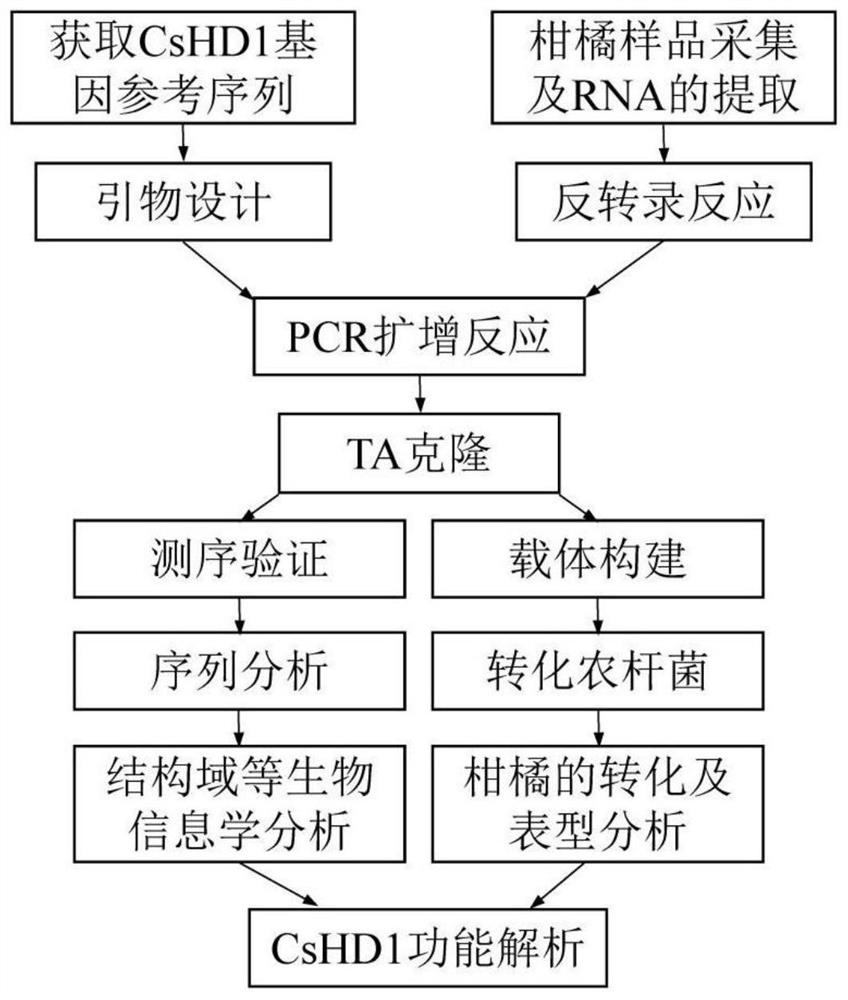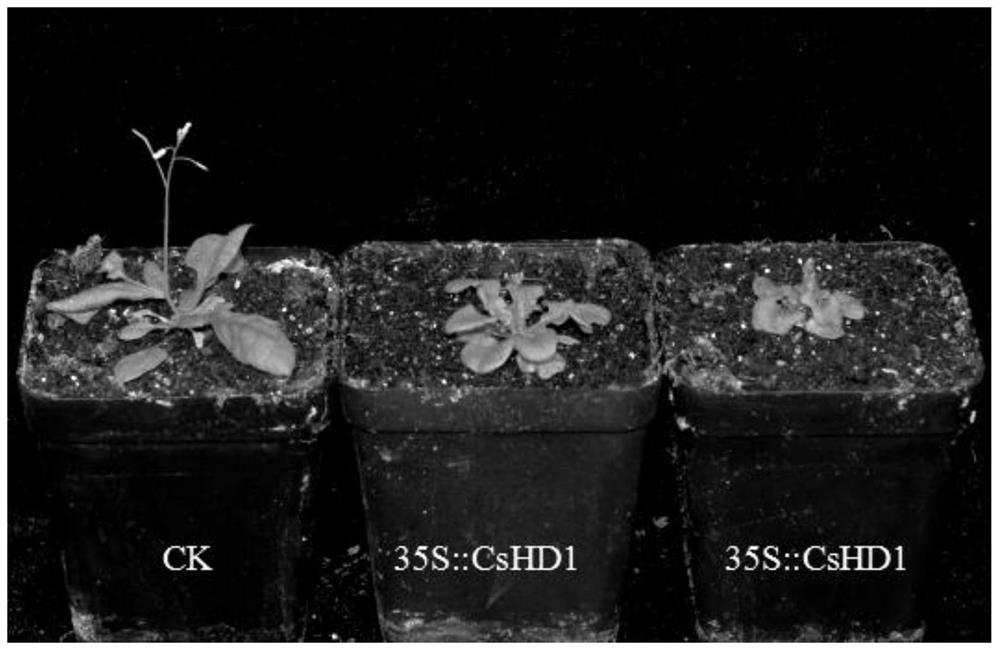CsHD1 protein and gene related to apical development and dwarfing and application thereof
A protein and top technology, applied in application, genetic engineering, plant genetic improvement, etc.
- Summary
- Abstract
- Description
- Claims
- Application Information
AI Technical Summary
Problems solved by technology
Method used
Image
Examples
Embodiment 1
[0018] Example 1 Cloning of CsHD1 Gene
[0019] This embodiment provides a method for cloning the CsHD1 gene, and the specific steps are as follows:
[0020] (1) Extraction of plant RNA
[0021] The collection of plant tissue samples (sweet orange top tissue) needs to use ice boxes or liquid nitrogen, and immediately store them in a -80°C refrigerator for later use. The whole process of RNA extraction needs to be carried out in an ultra-clean workbench, and the reagent adopts the Trizol kit of Takara Company, and the main steps are as follows:
[0022] a. Take 1mL RNAiso Plus reagent and put it in a 2mL RNAase free centrifuge tube, put it on ice;
[0023] b. Liquid nitrogen sample grinding: take an appropriate amount of sample and place it in a mortar, pour liquid nitrogen into it, and quickly grind it to powder;
[0024] c. Take an appropriate amount of ground sample in the RNAiso Plus solution, add 1 / 5 volume of chloroform after standing at room temperature, oscillate and...
Embodiment 2
[0062] Embodiment 2 Transformation of Arabidopsis
[0063] The transformation process of Arabidopsis thaliana is as follows: when the Arabidopsis thaliana in the culture room grows up to flowering, the genetic transformation of Arabidopsis thaliana is carried out by the inflorescence infection method. First, the required Agrobacterium is shaken or streaked to activate, The activated bacterial liquid was used for the transformation experiment of Arabidopsis thaliana, and the specific operation steps were as follows:
[0064] a. Preparation of osmotic culture solution: 1 / 2MS solution or 5% sucrose solution, 0.5g of MES was added per liter, and the pH was adjusted to about 5.7;
[0065] b. The day before the transformation, prepare the overnight culture of Agrobacterium to the OD of the bacterial solution 600 Reach 1.2-1.6;
[0066] c. Centrifuge at room temperature at 5000rpm for 15min to collect the bacteria;
[0067] d. Discard the supernatant and suspend the cells with the...
Embodiment 3
[0072] Example 3: Genetic Transformation of Tobacco
[0073] Prepare the Agrobacterium bacteria solution one day in advance and culture overnight in a shaker at 28°C (OD 600 About 1.2), the next day, the cultured bacterial liquid was centrifuged to collect the bacterial cells, and the bacterial cells obtained by suspending the anti-MS liquid medium, OD 600 The value is adjusted to 0.8-1.0 for standby, and the whole transformation process is carried out in the ultra-clean workbench. The detailed transformation operation steps are as follows:
[0074] a. Take healthy and well-grown wild-type tobacco leaves and cut off the main veins, cut them into small pieces with a width of about 1 cm (appropriately make a small wound to facilitate Agrobacterium infection), and place them in the infection solution with the back facing up. About 10 minutes, during which it kept shaking;
[0075] b. Take out the leaves with sterile tweezers and place them on sterile filter paper to blot the re...
PUM
 Login to View More
Login to View More Abstract
Description
Claims
Application Information
 Login to View More
Login to View More - Generate Ideas
- Intellectual Property
- Life Sciences
- Materials
- Tech Scout
- Unparalleled Data Quality
- Higher Quality Content
- 60% Fewer Hallucinations
Browse by: Latest US Patents, China's latest patents, Technical Efficacy Thesaurus, Application Domain, Technology Topic, Popular Technical Reports.
© 2025 PatSnap. All rights reserved.Legal|Privacy policy|Modern Slavery Act Transparency Statement|Sitemap|About US| Contact US: help@patsnap.com



